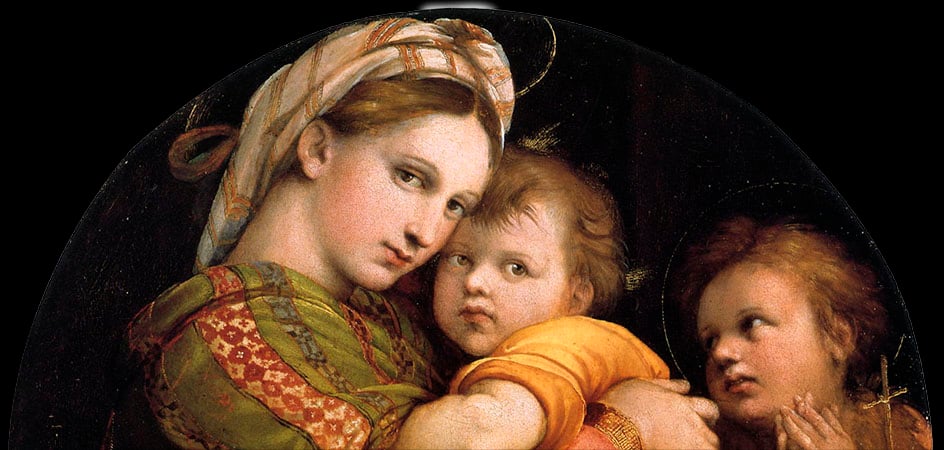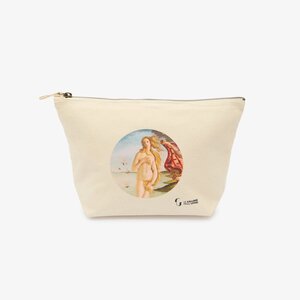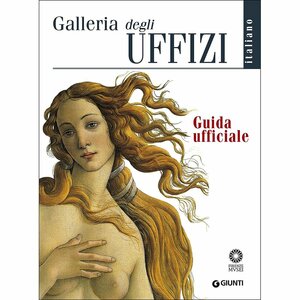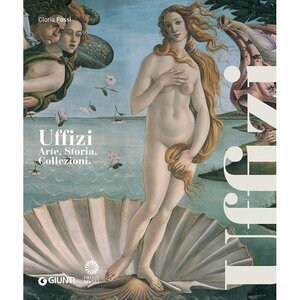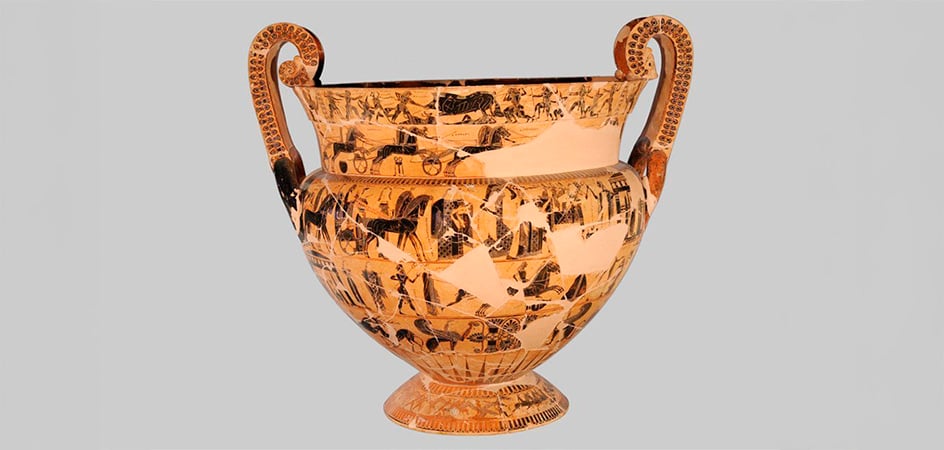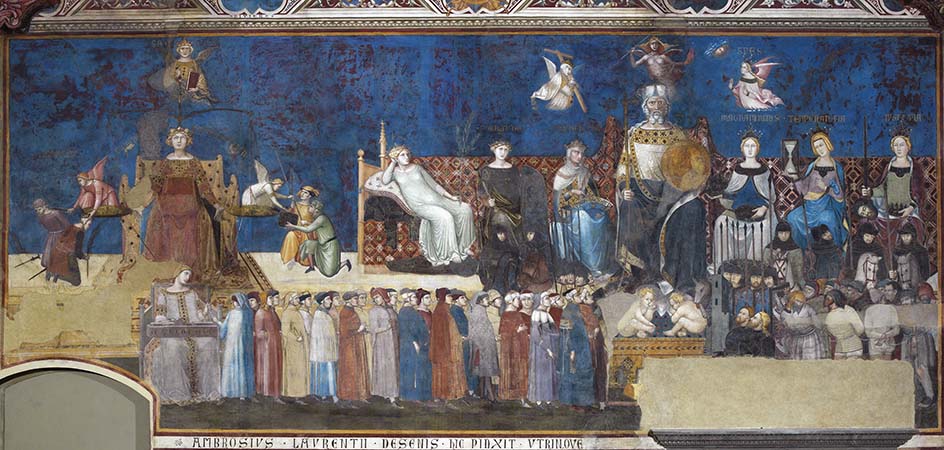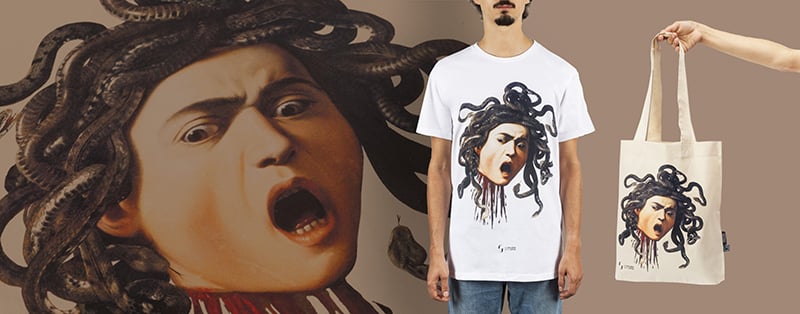Displayed in the Sala di Saturno at Palazzo Pitti is one of Raffaello Sanzio’s most celebrated works: the Madonna col Bambino e san Giovannino, commonly known as Madonna della Seggiola. Set in an ornate seventeenth-century frame, the painting captivates for its deeply intimate tone – almost like a window into a tender moment of family life.
Still considered one of the Urbino master’s finest creations, little is known about its origins.
A scene of profound sweetness
The Virgin and Child are depicted in a loving embrace. Mary, seated on a chair whose backrest is just visible, leans into a loving gesture, cradling the plump Child in her soft arms. One leg raised to support his weight while she tilts her head to gently touch his face – a pose that accentuates the sentimental quality of the work. The infant Saint John stands slightly behind, absorbed in contemplation with his hands clasped in prayer. Through a careful interplay of gazes, the viewer too is drawn into the scene: while Jesus solemnly gazes into the distance, beyond the scene, while Mary directly engages the observer with a melancholy expression.
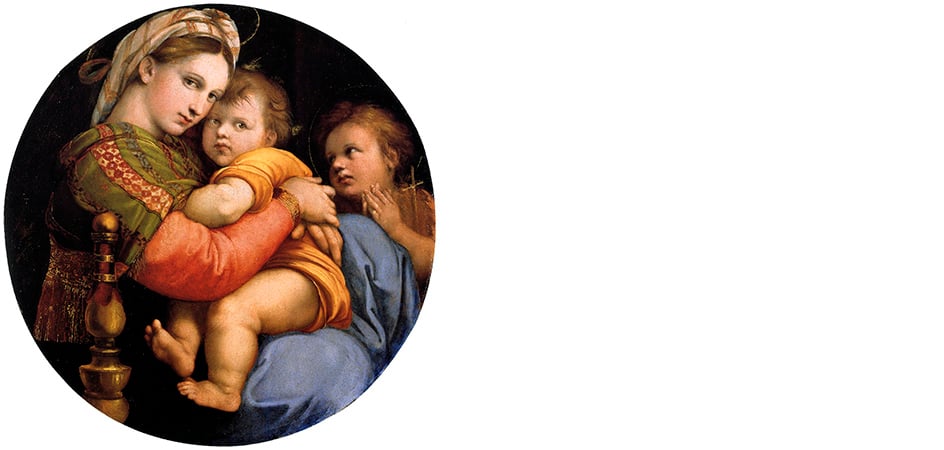
The serene atmosphere is enhanced by the richness of the garments and furnishings, where every colour choice is deliberate. Raffaello dresses the Madonna in a gypsy-inspired fringed shawl made of sheer silk, adorned with red and blue patterns. The green base of the fabric echoes the ultramarine blue of her dress, while the warm tones of the red sleeve and the Child’s ochre tunic introduce a rich note that balances to the composition. The distribution of colours mirrors the shape of the embrace and highlights the deep bond between Mother and Son.
Her headpiece was highly fashionable at the time – a white cloth streaked with gold worn like a turban – and it was typical of fifteenth-century noblewomen (also seen a few decades earlier in Botticelli’s Madonna del Magnificat, c.1483, Florence, Gallerie degli Uffizi). These elegant details harmonise perfectly with the opulence of the chair that gives the painting its name – a “ceremonial seat” reserved for high dignitaries, similar to that seen in Raffaello’s Ritratto di Leone X (1518, Florence, Uffizi), and here it plays a crucial role.
As the painting’s only vertical element, it not only orients the panel correctly but also highlights its perfect circularity, both in form and composition.
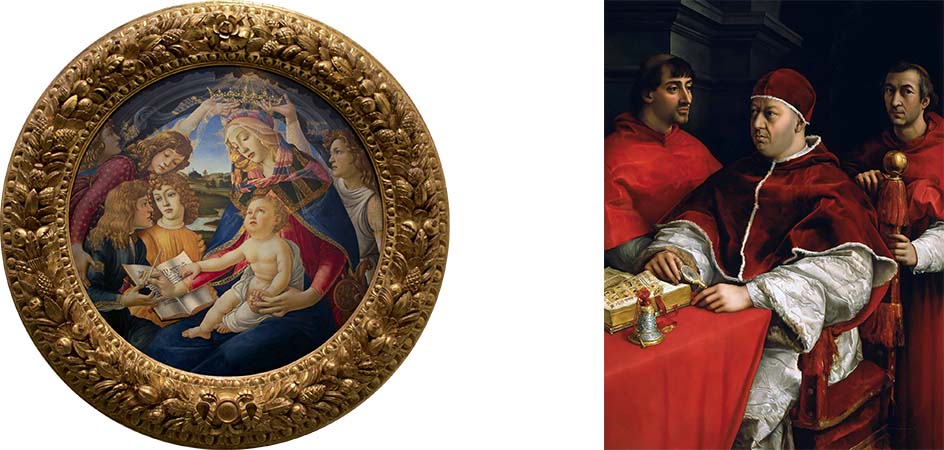
Form, composition and precedents
Raffaello was no stranger to circular formats: the Madonna Conestabile (c.1504, St. Petersburg, Museo dell’Ermitage) and the Madonna dell’Alba (c.1511, Washington, National Gallery of Art) are both forerunners to the Madonna della Seggiola. Circular panels were quite common in Tuscany, especially in the form of deschi da parto: decorated round birth-trays given as good-luck gifts to new mothers, of which outstanding examples still survive today, such as Michelangelo’s Tondo Doni (1505–1506, Florence, Uffizi).
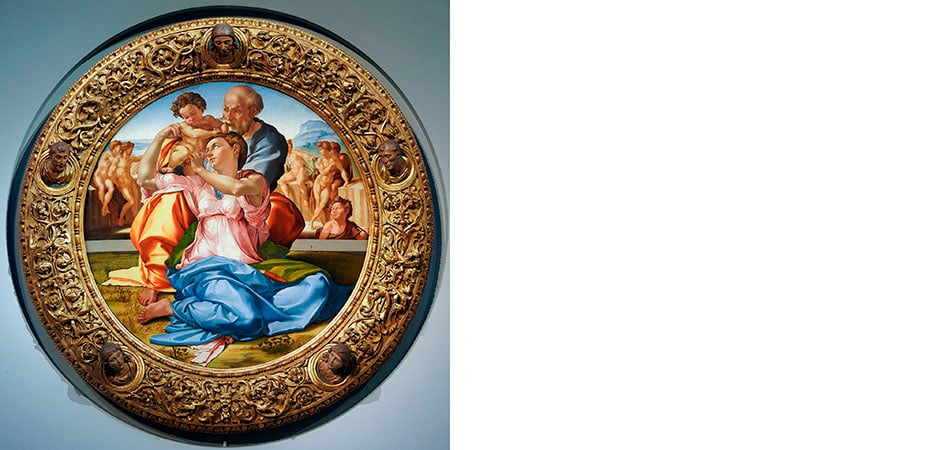
The theme of the Madonna affectionately embracing the Child was not new –neither for the artist nor in art history. A motif rooted in Byzantine iconography, it persisted for centuries, up to Donatello’s Madonna Dudley (1450–1460, London, V&A Museum), a likely direct inspiration for Raffaello. His Madonna della Tenda (c.1513–1514, Munich, Alte Pinakothek) further attests to his fascination with this interpretation of the Holy Family.
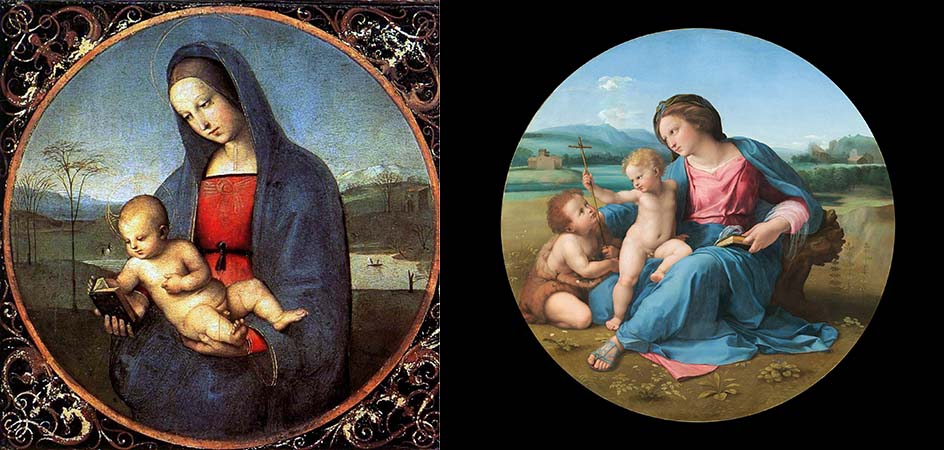
Yet with Madonna della Seggiola, Raffaello reaches perfection. The circular form is elevated by the placement of the figures, who inhabit the space with studied naturalness. Raffaello meticulously designs the composition to integrate the figures harmoniously: Mary’s body curves gently, the faces tilt towards one another, and the infant Saint John, positioned on the opposite side, leans towards the Holy Family to visually enclose the scene.
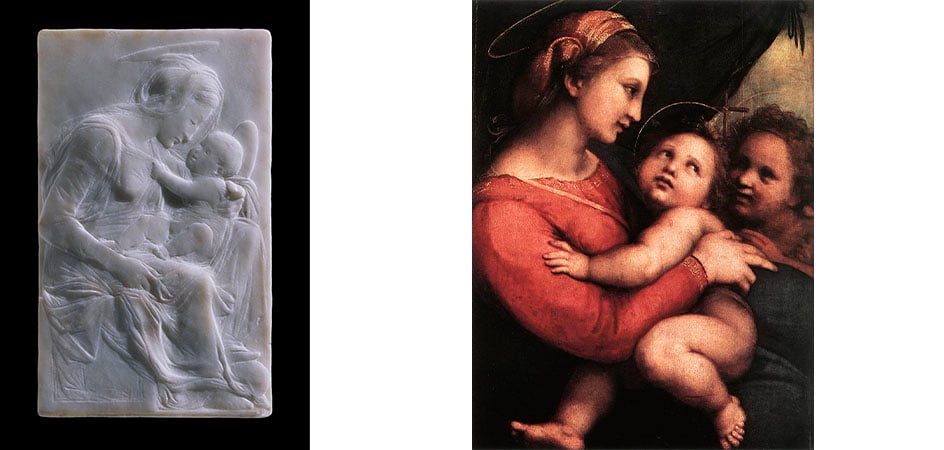
The interlacing of arms and legs create a spiral visual motion, and their rounded shapes – such as the Child’s sculpted elbow – enhance the panel’s circular shape, with the dark background making the figures appear almost to emerge from the frame.
Critics have also identified other influences in Raffaello’s masterpiece, such as the depiction of the bodies, which reflects Michelangelo’s teachings in the Vatican, or the choice and handling of colour, which recalls the Venetian school. However, little to nothing is known today about its origin and patronage.
Origins of Madonna della Seggiola, between fact and legend
In Florence, the panel was first documented in 1589, listed in an inventory of the Tribuna degli Uffizi. However, it may have originally been commissioned by a high-ranking Roman prelate – possibly even Pope Leo X de’ Medici. The chair’s circular backrest has been interpreted as a symbol referencing the balls in the Medici coat of arms and as a Christian metaphor of birth-death-rebirth.
Known to the papal court – as confirmed by an engraved version found in a letter of indulgence issued by Pope Gregory XIII Boncompagni (1572–1585) – the painting left the Vatican to arrive in Florence only in the late sixteenth century. In 1698, Grand Prince Ferdinando de’ Medici ordered it moved from the Uffizi to his bedroom in Palazzo Pitti, where it was hung opposite Raffaello’s Madonna dell’Impannata (c.1511–1512). At this time, the original frame was replaced with the elaborate one seen today.
Under the House of Lorraine, the Madonna della Seggiola was moved to the sala di Marte in 1761, before being looted by Napoleon’s troops in 1799 – the first Italian work to suffer such a fate. Displayed briefly at the Louvre, it later decorated Josephine’s apartments at Saint-Cloud castle and returned to Italy only seventeen years later. Its current location dates to 1882.
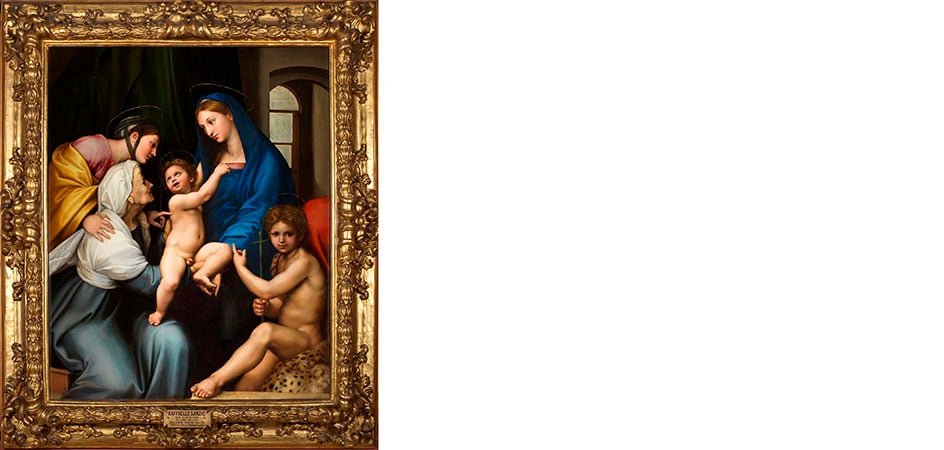
The legend of the impromptu portrait
As with many masterpieces, the lack of definitive documentation has inspired speculation and myth. Thus, the Madonna della Seggiola became the subject of fanciful tales. The earliest, later reworked into various versions, appears in a children’s book by Ernst von Houwald in 1820.
According to this story, a hermit fleeing wolves finds shelter in an oak tree and is saved by the daughter of a winemaker. Having escaped danger, the hermit foretells a glorious future for the brave girl and the oak tree. Years later, the tree is felled for barrel-making and the girl, now married with two children, is spotted by Raphael while passing through. Struck by the sight of her and her beautiful children and seized by an irresistible creative impulse, he paints her on the bottom of a barrel, immortalising her as the Virgin.
Though this tale remained widespread even into Ernst H. Gombrich’s day – as he notes in a well-known essay dedicated to the painting- scholars today agree it is no more than a delightful legend.
More debated is the identity of the sitter: some believe it to be a real person – perhaps Raffaello’s lover Margherita Luti herself, also depicted in La Fornarina (c.1520, Rome, Galleria Nazionale Barberini Corsini) and in Velata (c.1512–1515, Florence, Palazzo Pitti). Most, however, argue the features are not of a living model but an idealised feminine type, so perfectly executed as to appear real.
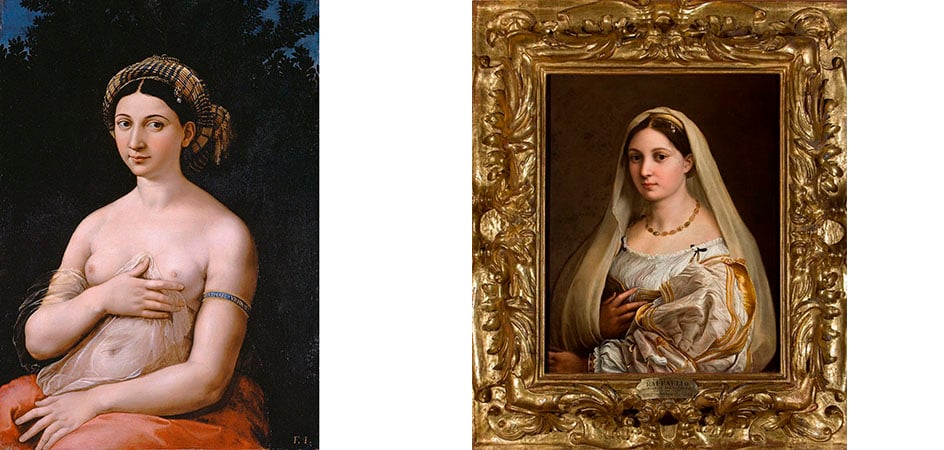
The delicate balance between the sacred and the secular and its critical reception
The loving gesture between Mother and Child, in this charismatic work, imbues the scene with deep humanity, bringing it into a more earthly dimension that is unusual for this kind of depiction. The figures might seem humble were it not for the luxurious clothing and dignified chair, which elevate their status and symbolism. Raffaello doesn’t deny the group’s sacred nature, but renders it contemporary with worldly traits. This interplay between divine and human is among the most admired – and debated – aspects of the painting’s critical reception.
In any case, according to one of the most widely accepted interpretations, the Virgin draws the Child close in a protective gesture – turning her shoulder and casting a sorrowful gaze towards us – as she foresees His destiny.
Are you interested in articles like this?
Sign up for the newsletter to receive updates and insights from BeCulture!
With the exception of a brief decline in the mid-19th century, the painting has remained consistently popular. From the 1600s onwards, painted and miniature reproductions became widespread, bringing prestige both to those who created them and the original itself.
Among its most renowned admirers was the French painter Jean-Auguste-Dominique Ingres, who openly drew inspiration from the Italian master. Years later, during a trip to Italy, Pierre-Auguste Renoir is said to have remarked: “I came to see this famous painting out of curiosity, and found myself before the most wonderfully free and living piece of painting I’ve ever seen.”
We could not find better words to describe this sublime masterpiece and the feeling one experiences in front of it. We can only invite you to go and see it for yourself.


